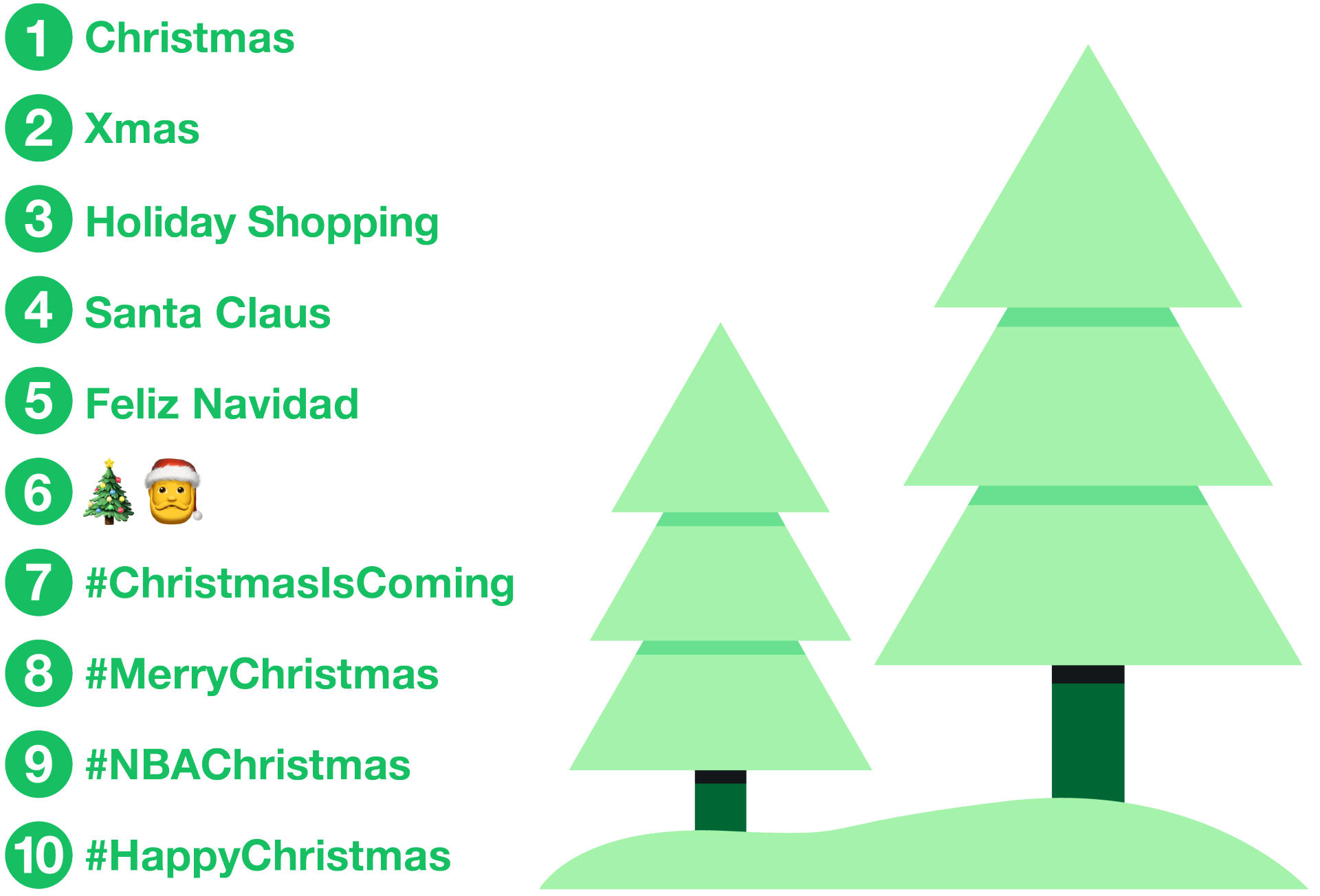Insights
Want to connect to the holidays? Start with the people on Twitter

We tracked last year’s holiday conversation on Twitter and uncovered nine trends marketers should keep top of mind this season.
Twitter’s audience is among the most engaged and receptive, and that’s especially true during the holidays. Our audience turns to Twitter during the holiday season to look for the best deals, share recipes and travel tips, and, of course, let others know what they’re shopping for. And regardless of whether they’re shopping on Black Friday, Cyber Monday, or any other day during the holiday season, people flock to Twitter for insights into what to buy.
If you’re launching something new this holiday season, you need to get in front of Twitter’s audience. People on Twitter are 31% more likely to be the first to buy new products compared to the online population.1 And their purchases could have a ripple effect too, as two-thirds of people on Twitter influence the purchases of family and friends.2
The holidays are fertile ground for any marketer, and Twitter can help you fine-tune your strategy with conversation data that offers new insights into holiday shopper behavior. Here are the important holiday trends marketers need to know in order to navigate the biggest shopping moment of the year.
1. The Twitter audience is already in the Christmas spirit
To people on Twitter, holiday shopping is not a casual exercise. Rather, they catalog what their friends and family want for the holidays throughout the year. The majority of people on Twitter (52%) start thinking about their holiday shopping lists as early as September. Early Christmas shopping is focused on festive clothing (pajamas, socks, sweaters).
Top keywords in Christmas Tweets

2. Friendsgiving is now a marketable millennial holiday
This past holiday, Friendsgiving — celebrating Thanksgiving with friends instead of family — became a major theme on Twitter. There was a +295% increase in Friendsgiving mentions since the previous season, driven primarily by millennials and women. Overall, Friendsgiving was discussed as being more relaxed than Thanksgiving, a holiday that was associated with stress, frustration, and exhaustion due to planning and travel.
3. More people are forgoing turkey for non-meat options
Regardless of whether someone was celebrating Thanksgiving with family or friends, food remained top of mind. New food ideas started trending early in November, as people shared their “must-haves” for Thanksgiving dinner.
What’s on the menu? New recipes went viral, especially among people on Twitter who wanted to celebrate Thanksgiving but save a turkey and their waistlines. Vegetarian and vegan options dominated the conversation, with a 10X increase in vegan and plant-based Thanksgiving conversation compared to last year. Grandma’s turkey may be the foundation of the holidays in many homes, but people on Twitter are looking for new, healthy twists on holiday classics.
4. People love, hate, and still participate in Black Friday
People on Twitter were feeling good about the holidays until Black Friday. The shopping holiday is a major source of exhaustion (more so than any other holiday event), affecting women 47% more than men.
Although they might dread the madness, people on Twitter research the best deals well in advance and, compared to people not on Twitter, they’re 30% more likely to look for holiday deals early.3 They’re not aimlessly wandering the mall — they’ve mapped out their entire day. Last year, conversation about Black Friday peaked the day-of as people began discussing ways to avoid traffic and crowds in stores. Tweets about purchase intent or what was purchased often talked about visiting brick-and-mortar stores rather than making online purchases.
Top keywords in Black Friday Tweets

5. Moms are eager to steal the best deals on Cyber Monday
Anticipation for Cyber Monday was strongest on Black Friday. Many people Tweeted it was a “waste of time” to shop in brick-and-mortar stores on Black Friday when they could just get their deals online on Cyber Monday. Deal-savvy moms turned to Cyber Monday as a more convenient way to shop sales, associating the online shopping holiday with both hope and contentment. Online shopping has continued to gain favor as the shopping channel of choice; there was a 37% increase in online shopping conversation since last year.
Top keywords in Cyber Monday Tweets

6. Dads got in the holiday spirit, too
As one might expect, dads were more likely to complain about holiday shopping than moms. However, they’ve become more involved in the holiday shopping season than ever before. There was a notable increase in shopping discussion among dads compared to last year, and it started far earlier in the season. Dads were 9% more involved in holiday planning than in previous years, using online retailers to save time. Saving money was less top of mind — dads were 57% less likely than moms to discuss saving and budgeting.
7. Consumers care
Consumers Tweeted concern for retail workers who had to spend Thanksgiving and Black Friday at work rather than with family. Some retailers jumped on the trend with several businesses using Twitter to remind people they would be closed on Thanksgiving.
8. Shoppers get distracted by self-gifting
Many consumers skipped Black Friday and Cyber Monday altogether and did their shopping in December. People on Twitter hit the stores or went online with the intention of shopping for others, only to end up buying a gift for themselves. The trend continued throughout December, with male shoppers more likely to continue buying for themselves late in the season.
9. December brings holiday cheer and last-minute deals
The holiday spirit is out in full force by December. At this point, 63% of people on Twitter are setting up decorations and listening to holiday music.4 Even though it’s holiday crunch time, gift purchasing continues during this period as well. People on Twitter are 7% more likely to still be looking for holiday deals5 and more likely to Tweet about shopping in stores than online in December. In fact, the biggest peak in the brick-and-mortar shopping conversation after Black Friday happened on Christmas Eve.
Tweets about shopping in store peak on Black Friday & Christmas Eve

What does this mean for marketers?
With this information, marketers can speak directly and more effectively to a Twitter audience that’s already engaged and receptive to holiday messaging. And by understanding when they’re filled with holiday joy or holiday dread, you’ll be able to tailor your message directly to your audience. By digging into the Twitter conversation, you’ll also have a better sense of who you should target and when you want to message them during the holiday season. The holidays are a crucial time for most brands, and with these insights, you’ll be better prepared to position yourself in the crowded marketplace.
Methodology
Twitter partnered with the Brandwatch Strategy & Insights team to tackle these questions and understand the consumer experience throughout the holiday period.
Public Twitter data was collected November 6–December 31, 2017, and analyzed using Brandwatch Analytics.
Brandwatch collected/analyzed general holiday discussion as well as that relating to specific events, brands, and holiday topics.
Footnotes:
1. Twitter-commissioned study: Kantar Millward Brown, 2017
2. Global Web Index, Q3 2016
3. Twitter-commissioned study: Twitter Insiders Holiday Study 2017
4. Twitter-commissioned study: Twitter Insiders Holiday Study 2017
5. Twitter-commissioned study: Twitter Insiders Holiday Study 2017